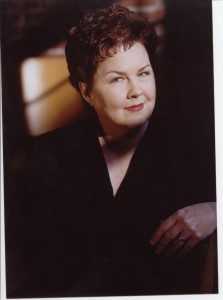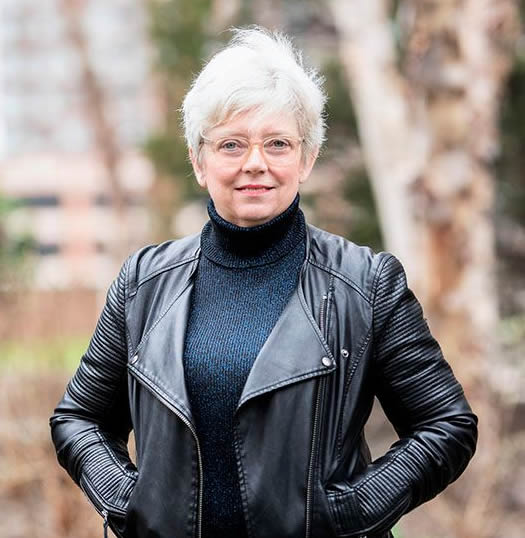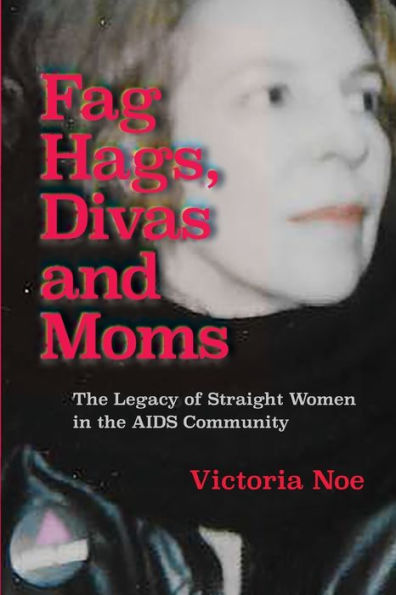Women's History Month - Eileen Dreyer
[caption id="attachment_1314" align="alignleft" width="144"] Eileen Dreyer[/caption]
Eileen Dreyer[/caption]
I’ve known Eileen Dreyer since the Beatles were still together, so that’s a long time; in fact, we saw them perform. While I was raising money for AIDS organizations in the late 80s and early 90s in Chicago, she was on the front lines in St. Louis. The anger is still there, as it is for many of us. Her story continues Women’s History Month:
I hadn't realized how angry I still was until I watched The Normal Heart. Seething angry, unresolved angry. Wishing there were someone I could scream at angry. Because I was there. I saw the beginning of the epidemic. And I'm not sure I'll forgive us for how we faced it.
I worked a trauma center back in the 80s. Not in New York or LA, where the epidemic hit hardest: St. Louis. We had a gay community. You know, the 'artsy' part of town where couples were rehabbing historic houses and turning neighborhoods. The area was still conservative enough that it took courage to live as an openly gay person. I remember doctors and teachers and nurses who hid in plain sight rather than lose their jobs or families. I remember that others left rather than risk it. But those who remained always balanced on an uncertain edge.
And then the whispers started. There was a new plague, untreatable, terrifying, communicable. Through sex and needles, we heard, but nobody was quite sure, except that gays were spreading it. Nobody wanted to take a chance. In the ER, where we'd always taken a perverse pride in ending a shift spattered with blood like serial killers, suddenly we were wearing gloves to start IVs and face shields to prevent spatter. Getting stuck with a needle provoked panic. Where we'd never really feared contagion before, suddenly danger lurked everywhere.
I remember the first time I saw a Kaposi Sarcoma, like an obscene leech on a thin back. I remember standing with a group around the x-ray viewbox looking at the lacework pattern of pneumocystis pneumonia, and knowing before the patient did that he was going to die, and he was going to die horribly. I remember that he recognized his diagnosis by the looks on our faces. I remember that most of them knew their diagnosis long before we did.
And I remember what inevitably happened after, when the diagnosis could no longer be denied, because the rest of the world panicked. If you think Ebola was bad, you have no idea. And like any panicky animal, it turned on the victim. The blame was vicious, the fear pervasive. I remember how hard we struggled to find help for that young man. Nobody wanted to touch him, you see. They didn't know if just touching him would infect them (and to be clear, what I do not remember is anybody contracting AIDS from patient contact). Some hospitals wouldn't admit an AIDS patient. After a while, of course, the insurance ran out or simply didn't cover the disease, and the patient was exiled to the charity of the city hospital, which is little charity at all.
An AIDS diagnosis demanded full isolation. And depending on who was taking care of the patient that often meant that he was sentenced to the silence of an empty room. Nobody wanted to touch him. Some outright condemned him, because, you know, he deserved what he got. I used to take care of boys with hemophilia. They came into the ER for transfusions. Every one is dead. Exactly how did they deserve that death? How did anyone?
I can still see some of my patients: skeletal, eyes fever-bright, the fear sweating off of them as they waited hour after hour for someone, anyone to care for them. I can remember the phone calls to other hospitals or ambulances that refused transport, or worst of all, funeral homes that refused to take that boy's body, as if he didn't deserve a decent burial. And never will I forget making phone call after phone call for a desperately sick boy who only wanted to talk to his father, only to be hung up on time and again. “Don't call me again.” or “He deserves it.”
Let me be clear: Nobody deserves it. No single person on earth deserves what those young men and women went through before we knew how to treat AIDS. Before we recovered our compassion. Before one young woman who married into a royal house reached out her hand and took hold of a dying young man and proved that we could still be human and kind and faithful to our children and friends and brothers and sisters, no matter what they suffered - because of what they suffered.
Here's what I remember most, though. And it didn't even occur to me until much later. What I remember is that the gay community responded much as the Vietnam veteran community responded to the plague of PTSD. When no one else knew what to do with them, how to think about them, how to support them, how to ease their pain and grief and loneliness, when no one came forward to care for them, they took care of each other. I'm still angry that the rest of the world failed in their humanity. I'm not sure I'll ever forgive us. But I will always remember the grace of those friends and lovers and strangers wrapping their arms around my patients and letting them know that no matter what they faced, they would not do it alone.
New York Times best-selling author Eileen Dreyer has published 41 fiction novels in most genres and will soon publish her first non-fiction book, Travels with Dave, an account of the pilgrimage she and friends have been making to take the ashes of a friend around the world. A retired trauma nurse, she still lives in St. Louis with her family.
To learn more about my book – Fag Hags, Divas and Moms: The Legacy of Straight Women in the AIDS Community – and how to support it, check out its page. Support the project during Women’s History Month with a donation of $25 and receive the e-book version of the book when it comes out in 2017.
 Eileen Dreyer[/caption]
Eileen Dreyer[/caption]I’ve known Eileen Dreyer since the Beatles were still together, so that’s a long time; in fact, we saw them perform. While I was raising money for AIDS organizations in the late 80s and early 90s in Chicago, she was on the front lines in St. Louis. The anger is still there, as it is for many of us. Her story continues Women’s History Month:
I hadn't realized how angry I still was until I watched The Normal Heart. Seething angry, unresolved angry. Wishing there were someone I could scream at angry. Because I was there. I saw the beginning of the epidemic. And I'm not sure I'll forgive us for how we faced it.
I worked a trauma center back in the 80s. Not in New York or LA, where the epidemic hit hardest: St. Louis. We had a gay community. You know, the 'artsy' part of town where couples were rehabbing historic houses and turning neighborhoods. The area was still conservative enough that it took courage to live as an openly gay person. I remember doctors and teachers and nurses who hid in plain sight rather than lose their jobs or families. I remember that others left rather than risk it. But those who remained always balanced on an uncertain edge.
And then the whispers started. There was a new plague, untreatable, terrifying, communicable. Through sex and needles, we heard, but nobody was quite sure, except that gays were spreading it. Nobody wanted to take a chance. In the ER, where we'd always taken a perverse pride in ending a shift spattered with blood like serial killers, suddenly we were wearing gloves to start IVs and face shields to prevent spatter. Getting stuck with a needle provoked panic. Where we'd never really feared contagion before, suddenly danger lurked everywhere.
I remember the first time I saw a Kaposi Sarcoma, like an obscene leech on a thin back. I remember standing with a group around the x-ray viewbox looking at the lacework pattern of pneumocystis pneumonia, and knowing before the patient did that he was going to die, and he was going to die horribly. I remember that he recognized his diagnosis by the looks on our faces. I remember that most of them knew their diagnosis long before we did.
And I remember what inevitably happened after, when the diagnosis could no longer be denied, because the rest of the world panicked. If you think Ebola was bad, you have no idea. And like any panicky animal, it turned on the victim. The blame was vicious, the fear pervasive. I remember how hard we struggled to find help for that young man. Nobody wanted to touch him, you see. They didn't know if just touching him would infect them (and to be clear, what I do not remember is anybody contracting AIDS from patient contact). Some hospitals wouldn't admit an AIDS patient. After a while, of course, the insurance ran out or simply didn't cover the disease, and the patient was exiled to the charity of the city hospital, which is little charity at all.
An AIDS diagnosis demanded full isolation. And depending on who was taking care of the patient that often meant that he was sentenced to the silence of an empty room. Nobody wanted to touch him. Some outright condemned him, because, you know, he deserved what he got. I used to take care of boys with hemophilia. They came into the ER for transfusions. Every one is dead. Exactly how did they deserve that death? How did anyone?
I can still see some of my patients: skeletal, eyes fever-bright, the fear sweating off of them as they waited hour after hour for someone, anyone to care for them. I can remember the phone calls to other hospitals or ambulances that refused transport, or worst of all, funeral homes that refused to take that boy's body, as if he didn't deserve a decent burial. And never will I forget making phone call after phone call for a desperately sick boy who only wanted to talk to his father, only to be hung up on time and again. “Don't call me again.” or “He deserves it.”
Let me be clear: Nobody deserves it. No single person on earth deserves what those young men and women went through before we knew how to treat AIDS. Before we recovered our compassion. Before one young woman who married into a royal house reached out her hand and took hold of a dying young man and proved that we could still be human and kind and faithful to our children and friends and brothers and sisters, no matter what they suffered - because of what they suffered.
Here's what I remember most, though. And it didn't even occur to me until much later. What I remember is that the gay community responded much as the Vietnam veteran community responded to the plague of PTSD. When no one else knew what to do with them, how to think about them, how to support them, how to ease their pain and grief and loneliness, when no one came forward to care for them, they took care of each other. I'm still angry that the rest of the world failed in their humanity. I'm not sure I'll ever forgive us. But I will always remember the grace of those friends and lovers and strangers wrapping their arms around my patients and letting them know that no matter what they faced, they would not do it alone.
New York Times best-selling author Eileen Dreyer has published 41 fiction novels in most genres and will soon publish her first non-fiction book, Travels with Dave, an account of the pilgrimage she and friends have been making to take the ashes of a friend around the world. A retired trauma nurse, she still lives in St. Louis with her family.
To learn more about my book – Fag Hags, Divas and Moms: The Legacy of Straight Women in the AIDS Community – and how to support it, check out its page. Support the project during Women’s History Month with a donation of $25 and receive the e-book version of the book when it comes out in 2017.

